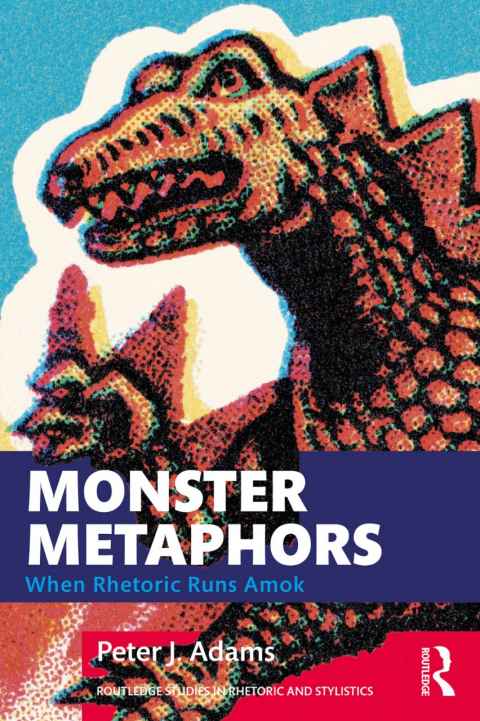Peter Adams: repairing damage wrought by rhetoric
1 June 2023
Opinion: Professor Peter Adams asks why it is so hard to purge society of metaphors that he says inflict damaging and out-of-date concepts.

The ‘leader as father’ metaphor is commonly exploited in autocratic regimes to position the person in charge as a strict but benevolent father whose rule
generates an orderly family life.
Metaphors contribute to our everyday lives in many wonderful ways by helping us describe, explain and express what is happening both in our surroundings and in our inner worlds. Just consider the power of the bubble metaphor used in the ‘stay in your bubble’ campaign that guided us through our first Covid-19 lockdown.
However, metaphors can also have a dark side. Some metaphors manage to embed themselves deeply in our minds in ways that allow them to grow in size and strength to a point that they begin to dominate all around and to unleash damaging ways of thinking and behaving.
For example, the ‘leader as father’ metaphor is commonly exploited in autocratic regimes to position the person in charge as a strict but benevolent father whose rule generates an orderly family life in which all citizens (‘children’) can benefit. Both left- and right-wing rulers have made use of this metaphor: in China, Mao Zedong was referred to as ‘Father Mao’, and in Italy, Benito Mussolini fashioned himself as ‘Duce and Father of fascist Italy’. In both cases, the metaphor played a role in propelling compliant and loyal ‘children’ into inflicting widespread destruction.
In my recent book, Monster Metaphors, I look closely at a set of metaphors that have grown to such a size that they are able to dominate their surroundings, squash out other competing metaphors and, on the basis of their supremacy, wreak havoc in lasting ways on those subjected to them.
One such ‘monster’, and one that achieved its dominance surprisingly quickly, is a metaphor that approaches economic systems in terms of ‘free-flowing markets’.
The metaphor had its origins in 19th century economic theory that proposes money moves around like fluids flowing in a contained system, in a similar way to water in an incoming tide being distributed through the channels and streams of an estuary.
The flows keep moving until an equilibrium is established and this process can be optimised by a flow controller (i.e. a government) guiding the flows in a productive fashion.
In 1947, the Austrian economist Friedrich von Hayek organised a meeting of economists, philosophers and political scientists at a hotel in Mont Pèlerin, a small Swiss town on the shores of Lake Geneva. Those attending were seeking economic theory that steered somewhere in between the extremes of communism and fascism. At the meeting was a rising star, Milton Friedman, an economist from the University of Chicago.
Friedman tweaked the metaphor of money flows in one important way: he took the role of flow controllers out of the equation. In other words, he insisted the flows need to be free to find their own equilibrium without any unnecessary and distorting interference from governments.
During the 1960-70s, a network of think tanks and policy institutes promulgated the freshly forged ‘free-flowing markets’ metaphor to political leaders, industrialists and the media. They gained such traction that the merits of the metaphor became championed in Ronald Reagan’s presidency and in Margaret Thatcher’s Conservative government.
Similarly in Aotearoa, the 1984 fourth Labour Government embraced this monster in ways that led to radical changes in our economy that included removing subsidies, selling off state assets, restructuring government agencies and reforming taxes. Successive National- and Labour-led governments carried these processes forward and, over time, the metaphor of ‘free-flowing markets’ moved from a promising idea to a self-evident truth.
The dominance of the metaphor of a ‘free-flowing market’ has come at a cost.
But the dominance of this metaphor has come at a cost. Over the past 50 years, we have shifted to a markedly less equal society. For example, in 1984 the richest ten percent earned five times as much as the poorest ten percent, but by 2014 this had risen to eight times as much. This rise in inequalities has lumbered our low-income communities with a range of social challenges as well as poorer physical and mental well-being.
The ‘free-flowing markets’ metaphor is one example of a monster whose dominance has had damaging effects. The later chapters of Monster Metaphors tackle the question of what might be done to curtail such dominance and pave the way for alternative metaphors. Predictably, monsters don’t respond to challengers lying down. Once detected, they will devote their considerable strength to measures aimed at diverting, blocking and stomping out any form of resistance.
Accordingly, tackling a monster is no easy undertaking. It typically requires multiple communities of resistance forming over time into a sequence of social movements aimed at destabilising the monster’s dominance and establishing alternative perspectives.

Peter J. Adams is a professor in Social and Community Health in the School of Population Health, Waipapa Taumata Rau, University of Auckland.
His latest book is Monster Metaphors: When Rhetoric Runs Amok, Routledge, New York, $63
The article reflects opinion that is not necessarily that of the University of Auckland. It first ran in the June 2023 edition of UniNews.